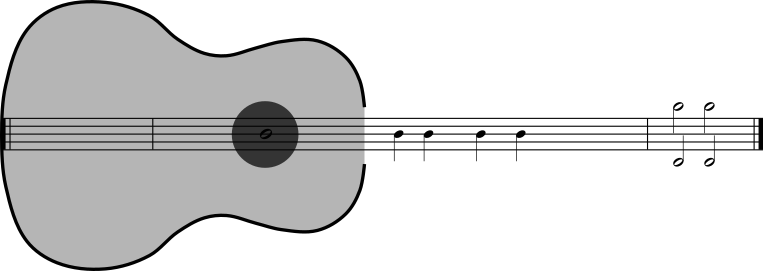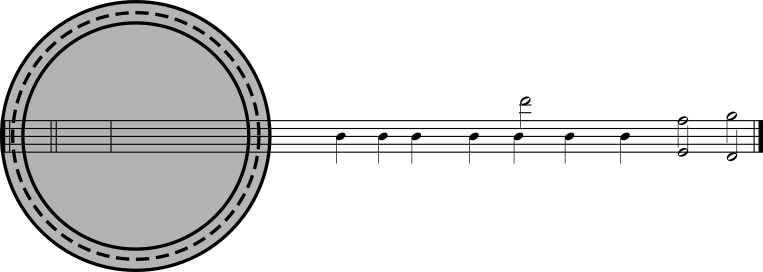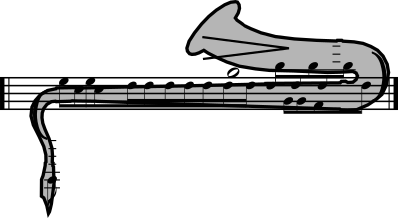| Home Register Puzzles Solve Teams Statistics Rules Solving Guide F.A.Q. Archive mezzacotta |
Solution: 3C. Time and Space
The puzzle presents us with a page that is ostensibly of music, but it is clear that it cannot be: The musical notation is rarely used correctly, nor does it describe music that could be played. Instead, the right approach here is to interpret the diagrams pictorially. Each stave (staff) end is marked as a beginning or an end, which is a clue that each line is independent of the others.
Since musical notation has been used to make the diagrams , it is reasonable to infer that there will be a connection to music. After a little squinting, perhaps, we might start to recognise the shapes of musical instruments; the various pieces of musical notation form the keys, holes, strings, etc., of each instrument.
Perhaps the easiest item to identify due to the familiar pattern of tuning pegs is the seventh item, the acoustic guitar. The process of identification may be helped along by a preliminary classification of the pictures: The first, second, and fourth are long and straight, and have mouthpieces — they are likely to be wind instruments; the third, and fifth through seventh look like string instruments due to the tuning pegs; and the last two seem likely to be brass instruments, based on their short size and large bells. The intended identifications are:
Flute: Note the mouthpiece on the left, and the pattern of keys.
Oboe: The shape and keys are similar to that of a clarinet, but the diagram clearly has a reed as the mouthpiece (which a clarinet does not have).

Ukulele: The four tuning pegs are also reminiscent of a violin or similar instruments, but the lack of f-holes, together with the presence of the round hole and the dots on the fretboard, rule those out.

Recorder: The offset pattern of the note holes on the recorder is characteristic. Observe that the notes are tied together in a way that indicates the usual fingering when playing.

Banjo: Note the lack of a sound hole, and the presence of the tuning peg partway down the neck is distinctive.

Electric guitar: The arrangement and number of the tuning pegs should be a good hint, as well as the pickups and the whammy/vibrato/tremolo bar.




The initial letters of the instruments spell out FOUR BEATS. The musical symbol with a duration of four beats, and the answer to this puzzle, is the SEMIBREVE. The alternative answer of WHOLE NOTE was also accepted.
Puzzle designer notes
The working title for this puzzle was The Fourier Seasons. This was a play on both Vivaldi's Four Seasons and the idea of a Fourier transform, since the horizontal axis corresponds to frequency (or a spatial dimension), rather than time, as in normal musical notation. The testing team said that although that was cute (actually, I think "annoying" might have been the word they used), it was too much of a red herring. The initial title idea survived partly in the form Time and Space, intended to refer to the dichotomy between considering the notation as a time sequence versus as a spatial representation.
